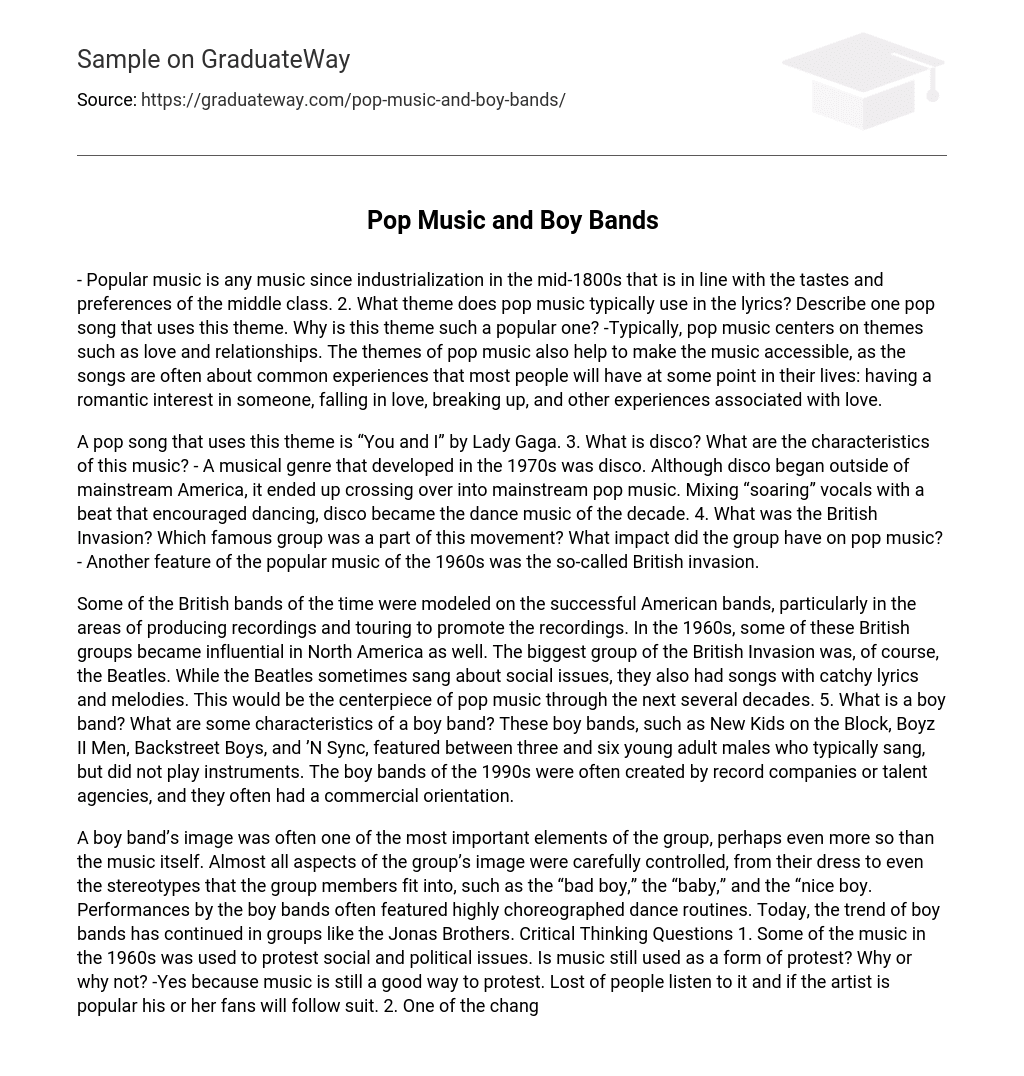Popular music, which emerged in the mid-1800s, is characterized by catering to the middle class. In terms of lyrics, it often revolves around themes like love and relationships. This choice of theme is widespread because it allows for relatability as many individuals experience romantic interests, falling in love, and going through breakups.
Lady Gaga’s “You and I” is an example of a pop song that explores the theme mentioned. Disco, a music genre that emerged in the 1970s, started outside of mainstream America but eventually made its way into popular music. Known for its combination of powerful vocals and dance-inducing beats, disco became the dominant dance music of that era. During the 1960s, the British invasion was another notable aspect of popular music, referring to the influx of British bands into the American music scene. One famous group from this movement was [group name], and they made a significant impact on pop music.
American groups that were successful in the 1960s had a significant impact on British bands, both in terms of recording production and promotional touring. Some of these British bands, including the Beatles, gained popularity in North America. The Beatles not only addressed social issues through their music but also crafted memorable melodies and lyrics that would influence pop music for years to come. Fast forward to the 1990s, where boy bands like New Kids on the Block, Boyz II Men, Backstreet Boys, and ’N Sync emerged. These groups typically consisted of three to six young adult males who focused primarily on singing rather than playing instruments. Commercially-oriented record companies or talent agencies often played a role in the creation of such boy bands.
Boy bands have always prioritized their image, often more than the music itself. Their outfits and stereotypes like the “bad boy,” the “baby,” and the “nice boy” are carefully crafted. Boy band performances are known for their meticulously choreographed dance routines, a trend that continues with groups like the Jonas Brothers.
Some critical thinking questions to consider:
- Did music in the 1960s serve as a form of protest against social and political issues? Does music still fulfill this purpose today?
- Has music become overly commercialized as the music industry has evolved throughout the twentieth century?
Do artists create music solely for money in today’s world? It seems that way. I believe more and more artists nowadays make music primarily for financial gain, especially those who achieve mainstream success or receive frequent radio play. However, non-mainstream artists often compose music based on personal experiences or other significant matters.
In what ways has technology impacted pop music? Let’s explore three technological advancements that have greatly influenced contemporary and past pop music. Technology has transformed the accessibility and popularity of pop music.
The invention of radio, television, and CDs has had a significant impact on pop music. Pop music is often linked to youth and younger people due to its appeal to young minds who are easily influenced by what is considered good. Moreover, the themes of rebellion and teenage love or experiences commonly found in pop music resonate with teenagers. The industry further promotes this idea through selling CDs and shirts, as well as featuring pop singers on TV shows.
Lady Gaga is a highly praised pop artist who creates music that captures the true spirit of the genre. Her songs cover a range of themes including love, equality, and self-acceptance. The catchy beats and rhythm in her music play a major role in establishing her status as a pop artist. Lady Gaga’s success can be credited to her unwavering commitment to embracing her unique persona and defying societal conventions, as demonstrated by her unconventional fashion choices.





